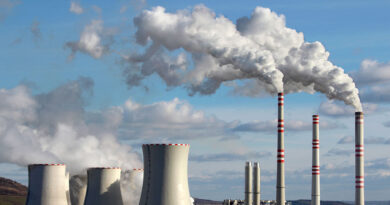Glencore seeks Australian carbon capture approval amid farmer protests
Australia’s Queensland state will decide this month whether to give Glencore, opens new tab a key approval to bury liquefied carbon dioxide in the country’s largest aquifer, a plan farm groups say must be blocked because it risks poisoning water supplies.
Carbon capture and storage (CCS) is needed to achieve the world’s net-zero goals and contain global warming, governments say. Its rollout has been slow but is gathering pace.
Swiss commodities giant Glencore plans a three-year, A$210 million ($135 million) pilot project that would pump 330,000 metric tons of CO2 from a coal-fired power plant in the northeastern state into an aquifer 2.3 km (1.4 miles) underground.
“This is an important test case for onshore CCS in Australia,” said Glencore spokesperson Francis De Rosa.
Glencore says there is no demand for the low-quality, expensive-to-reach water in its pumping site and the CO2 is extremely unlikely to spread significantly from where it is put.
“Our project is based on very robust data, fieldwork and analysis,” De Rosa said, adding that several government agencies had reviewed the plan.
But farm groups say it risks poisoning part of the Great Artesian Basin, a network of groundwater deposits spanning much of eastern Australia that supports agriculture and communities. They say the acidic CO2 in the rock could release and spread toxic substances like lead and arsenic.
The project is “unthinkable,” said Michael Guerin, whose AgForce farm association launched a court case in March to force the federal government to review Glencore’s plans.
Speaking at a beef industry conference this month, Queensland’s premier Steven Miles said the project “doesn’t sound like a good idea to me” and was unlikely to satisfy the state’s environmental rules – prompting a complaint by Glencore that he was interfering in the regulatory process.
“Our project should be judged on the science, not misinformation or political opportunism,” the company said.
Miles’s office declined to comment further. The federal environment ministry declined to comment.
Queensland’s environment department said the state’s independent environmental regulator had considered the potential impacts to groundwater and the Great Artesian Basin and was preparing its final assessment report.
CONSEQUENCES
The Queensland government will decide by the end of May whether to approve Glencore’s environmental impact assessment. If approved, further permissions would be needed but the main hurdle would be cleared.
Glencore’s plan would capture 2% of the emissions of the Millmerran power plant but could eventually store 90%, the company said.
The site for the project was originally identified as suitable for carbon storage by a government body.
Australia has only one active CCS project, the world’s largest, at Chevron’s (CVX.N), opens new tab Gorgon liquefied natural gas (LNG) project, on an island off the northwest coast.
Two more are under construction, including the first onshore operation from Santos (STO.AX), opens new tab to inject CO2 into a depleted gas field in South Australia state, and 14 are in development, according to the Global CCS Institute. Most target offshore storage and about half plan to store in depleted oil or gas reservoirs.
The use of aquifers to store carbon is becoming more common, said Alex Zapantis at the CCS Institute. The porous rock of many aquifers can host huge amounts of liquefied CO2. But only those where water is so deep and low quality that it is unsuitable for other use would be chosen or approved by regulators, he said.
The project is being managed by a Glencore subsidiary, Carbon Transport and Storage Corporation (CTSCo). Japan’s Marubeni Corp (8002.T), opens new tab and J-POWER (9513.T), opens new tab each committed A$10 million to it in 2022.
Source: Reuters




